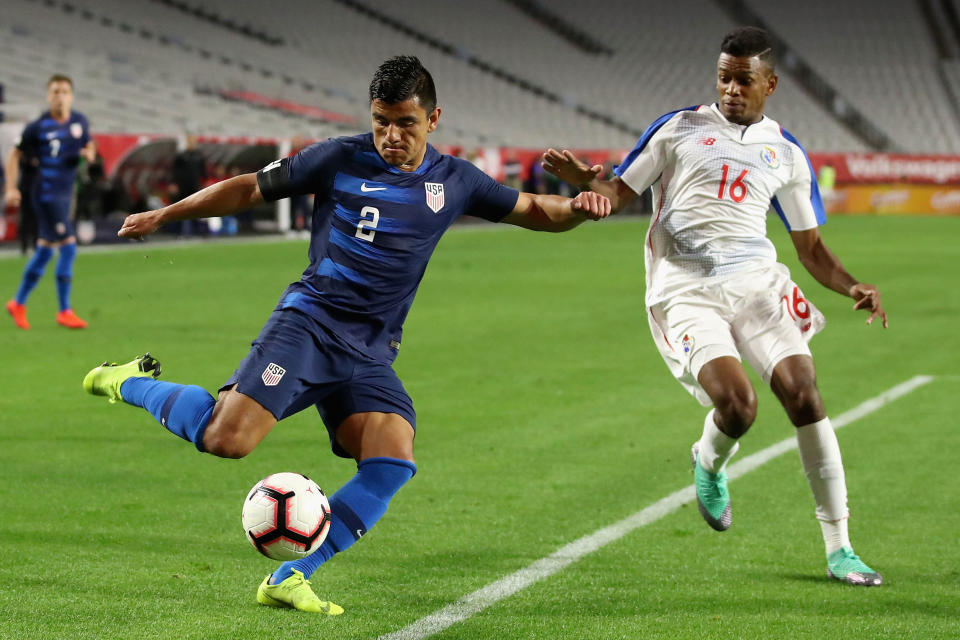The USMNT's win over Panama is the latest argument to do away with January friendlies entirely
National team games exist on a spectrum of importance, spanning from the World Cup final to the meaningless friendly. But then there’s also a kind of sub-category that’s lower still: the meaningless friendly between national teams that aren’t even really national teams.
Lots of countries do them, games held outside of FIFA’s international windows, when only domestically based players are called up. But the United States does them once or twice a year, more frequently than anybody that comes to mind These games bookend the traditional January camp, when Major League Soccer players – once complemented with a few American players based in Scandinavia, back when that was a hot destination for out-of-contract MLSers – spend a few weeks in a preseason camp with the national team, before getting a game in.
There’s an argument to be made that these games shouldn’t even really count as official national team matches, or as appearances for the players.
So let’s make that argument.

These January camp games, like Sunday night’s rusty 3-0 victory over Panama in Glendale, Ariz., just don’t measure up to what a full national team game is supposed to be. They have nothing close to the best squads, are played off the FIFA calendar and usually unfold in front of sparse and barely interested crowds. It all feels … unworthy. Like a cheap imitation of the real thing, which itself is hardly at its shiniest following a missed World Cup and a spluttering rebuilding process.
Only the most committed of fans have heard of some of the players taking part.
Sunday’s game, as usual, contained no players based abroad, where almost the entire presumptive starting lineup plays. It didn’t even have anyone from MLS Cup-winning Atlanta United, which opted not to release any of its players in favor of its preparation for the CONCACAF Champions League.
And the day before the game, only 6,000 tickets had been sold in the Arizona Cardinals’ vast 63,000-seat stadium. It didn’t help that tickets, once again, were wildly overpriced and that the WWE’s Royal Rumble was happening across town at the same time, which all smacks of poor planning on U.S. Soccer’s part. When the official attendance figure of 9,040 was announced, it became apparent that the national team had drawn only slightly better than the local minor league soccer team, Phoenix Rising FC, which averaged 7,609 fans in its playoffs last season.
Half-hour before kickoff between #USMNT and Panama in Glendale. That’s…not a lot of fans. pic.twitter.com/U8jk4L21NN
— Doug McIntyre (@ByDougMcIntyre) January 28, 2019
— Robert (@SunnySoCalRob25) January 28, 2019
Of the players on the roster for this game, 11 had yet to make their national team debuts. And that isn’t necessarily because they’re young. Five of those players were at least 23 years old, meaning they weren’t quite prospects anymore. Only four had double-digit caps and just one, Michael Bradley, had been to a World Cup.
Sure enough, when the lineup came out, it showed five Americans making their debut, setting a record for a U.S. game. And chances are few of them will have much of a national team career. That’s how it goes in January camp. Mostly marginal players get to play at being national teamers for a few weeks, before they resume their place way down on the depth chart.
What happens in January camp, or its ensuing games, is rarely consequential to the course of the real national team. Even in World Cup years, most of the campers wind up being irrelevant. In 2014, Jurgen Klinsmann took nine players from his January camp to Brazil on a 23-man roster. And that was actually an unusually high number. In 2010, Bob Bradley took just four.
Yet this annual exercise has given scores of pedestrian players a national team cap, if not several. They are earned in one of these instantly forgettable games, rather cheapening the honor of having represented the nation.
[ Follow Yahoo Soccer on Twitter and Facebook ]
Worse still, they are seldom compelling games. Last year, the Americans stumbled to a 0-0 with Bosnia and Herzegovina. In 2017, Serbia was tied 0-0 and Jamaica beaten 1-0. In 2016, the USA faced Iceland’s B-team and Canada.
This year’s foes are a Panamanian team also consisting entirely of domestic players. Only two players on its roster had more than three caps going into the game. On Saturday, the Americans face Costa Rica in San Jose, California. That team, too, was put together from domestic and MLS-based players.
And attendance has reflected the inferior product. Sunday’s embarrassing number was on-trend with previous figures. The Bosnia and Herzegovina game drew just 11,161. A year earlier, the Yanks filled up less than a third of an NFL stadium in San Diego – although they did sell well in a much smaller stadium in Chattanooga. In 2016, attendance was less than 10,000 in both games in Carson.
Sunday’s affair, such as it was, will be remembered only as new head coach Gregg Berhalter’s debut. And it’s a sort of false dawn at that, since this team likely in no way resembles his preferred group.
These January camp kick-abouts dilute the meaning of what a national team game is, devaluing the product. And the solution seems simple. There’s certainly merit in these games from a talent-developing perspective. But why not create a national B-team and call these B-team games, bestowing B-team caps?
That way, we can stop treating a glorified scrimmage like it in any way resembles a national team game.
Leander Schaerlaeckens is a Yahoo Sports soccer columnist and a sports communication lecturer at Marist College. Follow him on Twitter @LeanderAlphabet.
More from Yahoo Sports:
• Djokovic blows past Nadal to win record seventh Australian Open
• Warriors hold off Celtics in potential NBA Finals preview
• Iole: Emelianenko’s legacy secure despite one-sided KO vs. Bader
• Sunday marks 19-year anniversary of Patriots hiring Belichick as head coach


